1. Where to Stay
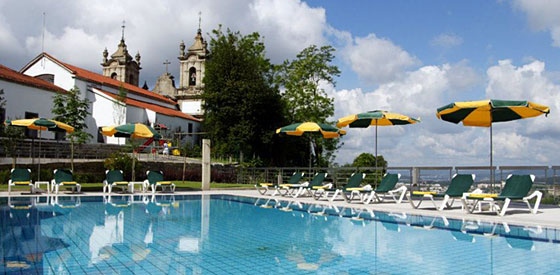
Sleep on a hilltop overlooking the city at Pousada de Guimarães Santa Marinha (from $224), a restored twelfth-century Augustine monastery that houses 51 rooms and suites over two wings, one inside the original building and the other within a bright, modern extension. Interiors feature historic cultural accents like glazed azulejo tile panels and granite fountains, while the grounds are home to verdant gardens lining a man-made lake and swimming pool.
Find a contemporary alternative to the city’s medieval center at Hotel de Guimarães (from $119), a subdued six-floor building that sits behind a glass façade. Its 116 rooms feature simple, uncluttered décor and the standard range of expected amenities, but book a suite on one of the top two floors for views of surrounding neighborhoods.
Surround yourself with history at Hotel do Toural (from $112), first opened as an inn in 1886 and now a four-star property located in two interconnected eighteenth-century buildings. Though it’s tucked away between an ancient church tower and a music school, nine of its rooms overlook the main square, which is lined with UNESCO-protected buildings, while rooms 304 through 306 face mountains in the distance.
2. Where to Eat
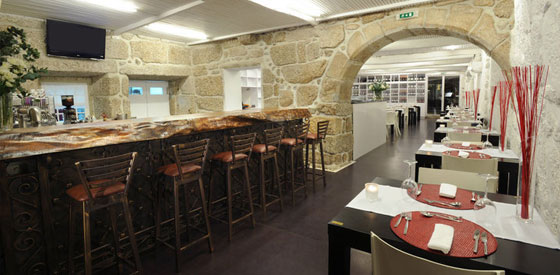
Dine on sophisticated Portuguese fare in a seventeenth-century manor with modern interiors at Histórico by Papaboa. Specialties include cornbread-crusted codfish with spring beans ($16.50) and black pork cheek with mashed alheira sausage ($17), and the wine list features no fewer than seven vinhos verdes, young wines produced in the surrounding Minho region. Come for dinner on Thursday night to enjoy live fado performances.
Head to the outskirts of town for refined takes on regional classics at São Gião (Avenida Comendador Joaquim de Almeida Freitas 56; 351-253-561-853), where you can peer out at the Moreira valley from the large, elegant dining room. The small-plate format allows for easy sampling; standards include veal tongue with potato puree ($18), partridge stew ($25), and fillets of octopus with black-eyed peas ($22), which you can pair with a selection of exclusively Portuguese wines.
Take a break from exploring the city center and try the set lunch ($25) at Solar do Arco, which sits on the ground floor of a sixteenth-century home. Selections change daily based on market produce, but you can expect rustic mainstays such as roast veal or shrimp with white beans.
3. What to Do
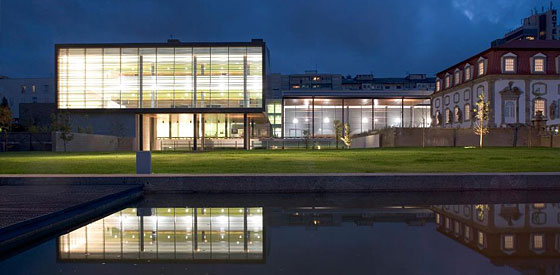
See where the city’s cultural revival began at Centro Cultural Vila Flor, which sits inside a restored eighteenth-century palace with a striking modern addition inaugurated in 2005. This year, the center features several events relating to Guimarães’s designation as 2012’s European Capital of Culture, in addition to its regular slate of music, dance, and theater performances as well as art exhibitions and film screenings. Upcoming performances include concerts by Eleanor Friedberger (of the Fiery Furnaces; May 15) and Laurie Anderson (May 22).
Check out the multidisciplinary offerings on display at the Center for Art and Architecture Affairs, unveiled last October in a former textile factory. This nonprofit collective promotes interaction between various fields, including visual arts, design, film, literature, media, performing arts, and architecture. Upcoming events include Frame Art, a video art and experimental cinema festival (May 3–July 8).
Visit the new Design Institute to see the schedule of events taking place here as part of the European Capital of Culture 2012 program. Opened in March in a former factory in Couros, a weathered part of town that was once the epicenter of the area’s booming leather industry, its inaugural exhibit focuses on product design, but it will become a center of study in September.
Keep an eye out for the Platform of Arts and Creativity, slated for a June opening in a former market in the city center. This multipurpose space will open with an exhibition by Portuguese painter José de Guimarães, with a display of his own artworks as well as pieces from his personal collection of African, Chinese, and pre-Columbian art. In addition, there will be rotating work spaces reserved for young artists developing temporary projects.
4. Insider’s Tip
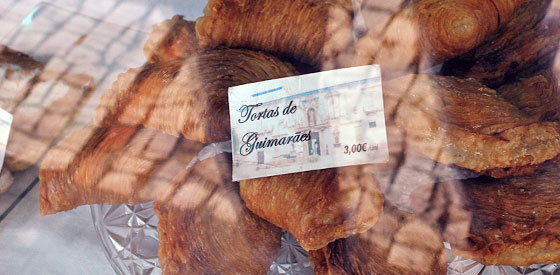
Guimarães is home to two pastries that don’t exist anywhere else in the world. Traced back to an eighteenth-century recipe created by the nuns at the Santa Clara Convent, both tortas de Guimarães ($4.50) and toucinho do céu de Guimarães ($2) can only be tasted here. Try these sweet treats at Casa Costinhas (Rua de Santa Maria 68), which picked up the recipe from the nuns’ servants when the convent shut down in 1891.
5. Oddball Day
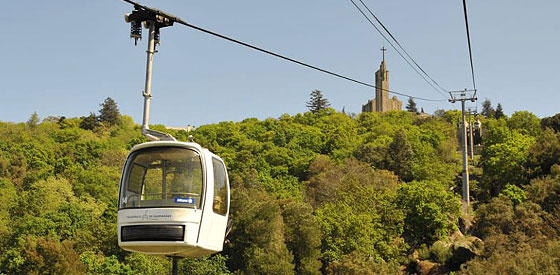
Take a break from cultural intake to experience Guimarães’s scenic surroundings with a walk up the Penha mountain range. The 5.3-mile trail features boulders, ravines, springs, and forests where hermits once lived in devotional grottos, and locals still come here to seek spiritual enlightenment. Hit the trail in City Park and then make your first stop at the Convent of Santa Marinha da Costa, followed by the small Chapel of Saint Catherine, with an ancient chalice-shaped pulpit said to be built by shepherds in the 1700s. Move on to the Penha Sanctuary, constructed in the thirties, and take in city views from its observation area. Next, walk to the Chapel of Saint Christopher, built upon enormous boulders, where a rustic staircase leads to a series of compartmentlike openings in the granite, then head to Grotto of Our Lady of Mt. Carmel, said to be the place where the Carmelite monk William Marino made his spiritual retreat. Reenergize with lunch at mountaintop Casa das Merendas restaurant (Resort of Penha; 351-253-516-875), which serves traditional plates like roasted cod with cornbread ($10.50), paired with a glass of vinho verde ($2.60). Once you’re ready, take the cable car back to town ($3.50) and then a taxi ($13) to São Torcato, a small village 3.7 miles north of Guimarães that’s known for its production of corn production in the 1500s, which led to a number of gristmills that still stand along the riverside centuries later. If you have the energy, you can embark on another four-hour hike through the forest and stop at the Monastery of São Torcato, where the mausoleum holds the mummified body of the namesake martyr who lived in the seventh century. Either way, don’t skip the still-operational corn mill (closed Sunday) at Sub-Devesa with its horizontal water wheel, and pick up a loaf of cornbread called broa de milho ($3.30) from the mill keepers. End the day with dinner at Restaurante Fentelhas (Rua Pedro Homem de Melo 111; 351-253-551-292), where you can try typical dishes from the Minho region, like sarrabulho, a traditional combination of pork and rice ($14.50), and the pica no chão rooster ($17). Afterwards, it’s just a short bus ride ($2) back to Guimarães.
6. Links
Check Guimarães 2012 for a monthly guide to events being held to celebrate its designation as this year’s European’s Capital of Culture.
The local tourism board’s website provides comprehensive listings of hotels, restaurants, and attractions, and allows you to create custom itineraries.
The city’s official website is a good starting point for travelers looking to explore medieval buildings and monuments.
Head to UNESCO to read up on the historic city center, which dates back to the twelfth century and was designated as a World Heritage site in 2001.